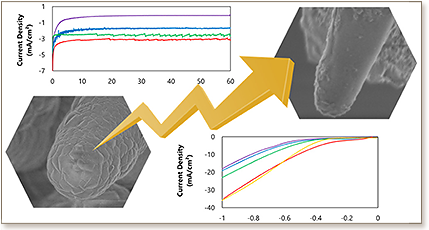


In tandem catalysis, two distinct catalytic materials are interfaced to feed the product of one reaction into the next one. This approach, analogous to enzyme cascades, can potentially be used to upgrade small molecules such as CO2 to more valuable hydrocarbons. Here, we investigate the materials chemistry of metal-organic framework (MOF) thin films grown on gold nanostructured microelectrodes (AuNMEs), focusing on the key materials chemistry challenges necessary to enable the applications of these MOF/AuNME composites in tandem catalysis. We applied two growth methods—layer-by-layer and solvothermal—to grow a variety of MOF thin films on AuNMEs and then characterized them using scanning electron microscopy, X-ray diffraction, and X-ray photoelectron spectroscopy. The MOF@AuNME materials were then evaluated for electrocatalytic CO2 reduction. The morphology and crystallinity of the MOF thin films were examined, and it was found that MOF thin films were capable of dramatically suppressing CO production on AuNMEs and producing further-reduced carbon products such as CH4 and C2H4. This work illustrates the use of MOF thin films to tune the activity of an underlying CO2RR catalyst to produce further-reduced products.